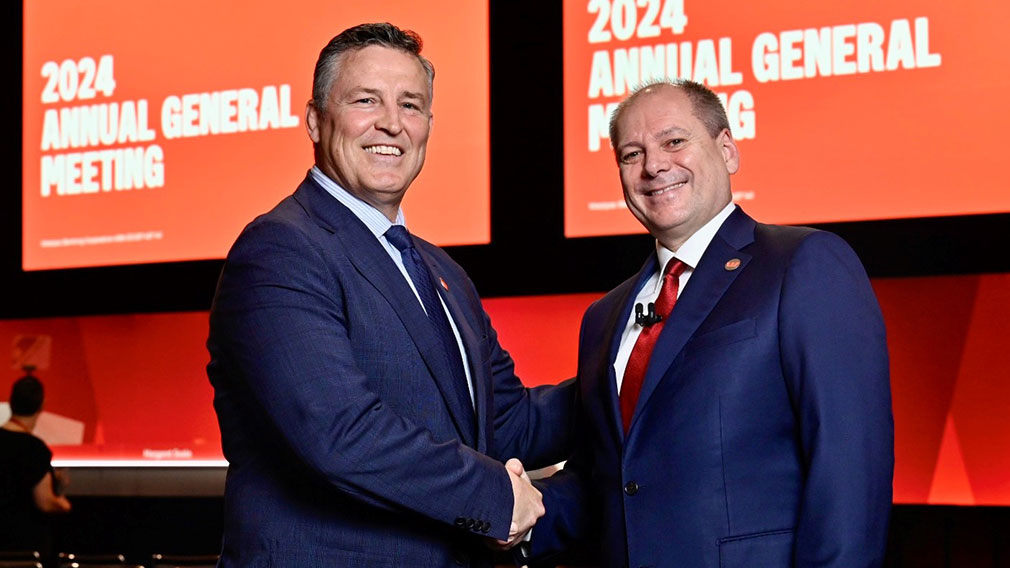Rowland pleased with progress on costs, margins
Westpac chief financial officer Michael Rowland on the bank’s full year 2022 results. (Josh Wall)
Westpac chief financial officer Michael Rowland said the bank had delivered a solid annual result, defined by improving margins over the second half of the year and further progress on cost reductions.
The bank’s statutory net profit rose 4 per cent to $5.7 billion in the year to September 30, although reported cash earnings were down 1 per cent on the prior year. Core earnings grew 12 per cent in the second half with growth in the key segments of Australian mortgages and business lending. Excluding notable items, the bank’s costs fell seven per cent over the year.
“The promise that we made to the market around costs overall has been delivered,” Rowland told Westpac Wire, handing down the bank’s results with chief executive officer Peter King.
“It’s a very pleasing result,” he added.
“In the second half all of our banking businesses grew, and that's the first time for a long time that we've seen that.”
Full-year cash earnings were impacted by $1.3bn in previously announced notable items, mainly reflecting the sale of the Australian life insurance business.
While costs were lower, the bank has revised its cost target for 2024 to $8.6bn, from $8bn previously.
“When we set the cost target we made a number of assumptions looking forward and the world has changed significantly since then – inflation is a lot higher and has been more persistent,” Rowland said, noting that the bank had revised assumptions and exclusions for the updated cost target. Investments the bank needed to make on regulatory compliance have also been longer-lasting than previously anticipated.
The bank continues to make progress on its targets for digitisation and automation, as well as the sale of non-core businesses, Rowland added.
“Those underlying activities that we had in place are delivering. We will see a smaller corporate footprint, we will see more of our processes digitised and automated, and that’s progressing to plan.”
Net interest margin, a closely watched indicator of profitability, improved by 5 basis points to 1.90 per cent in the second half, although it remains below historical levels.
Higher interest rates have been beneficial for margins, Rowland said, although the mortgage market remains highly competitive.
“People often ask me when the competition in mortgages is going to stop. I've been in this business for a long time – it's always there, and it will persist.”
Credit metrics broadly improved over the second half, showing that customers are so far coping with higher interest rates and inflation.
“The credit portfolio continues to surprise us on the upside, but we know that with higher inflation and higher interest rates, it's going to be harder for our customers to meet those additional costs,” Rowland said. “We expect in the year ahead that we will see more stress in the portfolio, but having said that we are well provisioned.”
“The foundations for our bank are very strong going into what’s likely to be a more stressful 2023. Our capital is strong, we’re well funded.”
Westpac nudged up its final dividend to 64 cents per share, for a total annual payout of 125 cents, up 6 per cent on the prior year.
For full disclosure of the bank’s full year results, visit the FY22 results hub.



